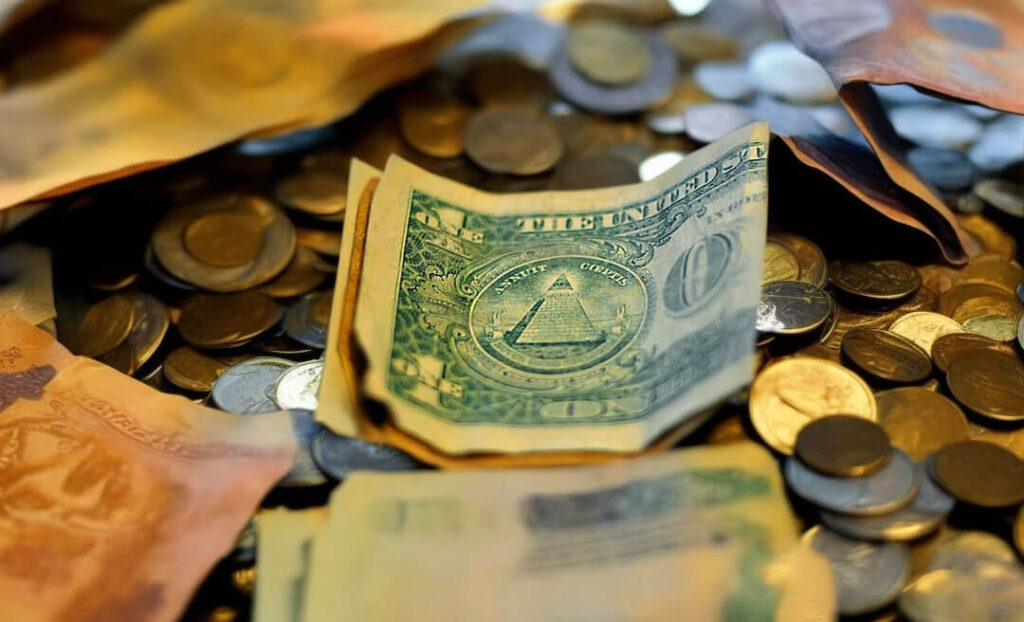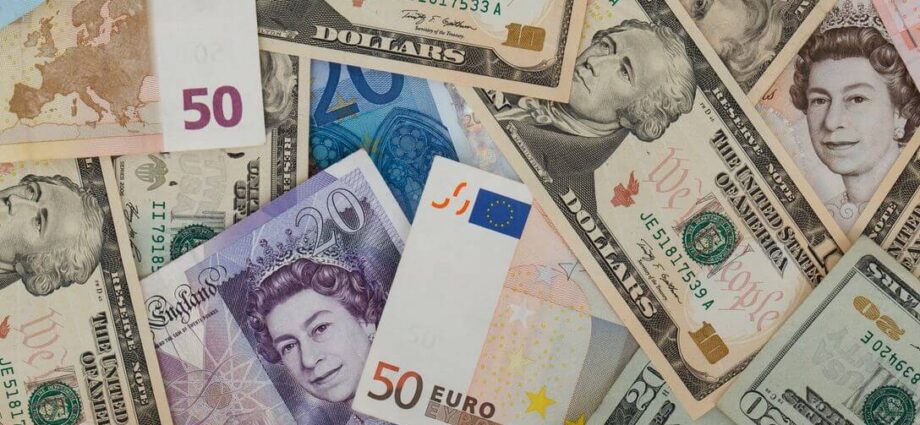Welcome to an exploration of the intriguing and complex world of money, where we’ll shed light on the concept of the most expensive currency and its role in the global economy. At its core, money is the primary measure of value, medium of exchange, and a store of wealth. However, its value isn’t static or universally agreed upon. In the world of international trade, the world’s most expensive currency might not be what you assume it to be.
First, it’s critical to understand that saying a currency is “expensive” or “cheap” is a relative concept. When we ask, what currency is worth the most? we’re usually referring to its exchange rate compared to another currency, often the United States Dollar (USD), the de facto global reserve currency.
In this dance of wealth and influence, the currency exchange rate plays a crucial role in determining the economic health of nations. From daily transactions to international trade agreements, the power dynamics of the world’s currencies shape our global economy.
Understanding Currency Value

Factors That Determine the Value of a Currency
The journey to understanding the most expensive currency world is filled with twists and turns. Currency value isn’t just a random number — it’s a measure influenced by several factors, the primary one being supply and demand. If a currency is in high demand, its value rises. Conversely, if more people want to sell a currency than buy it, its value decreases.
Economic indicators like inflation, interest rates, and the country’s economic health also play a vital role. For instance, high inflation or interest rates often result in a lower value of the currency. A stable political environment, low government debt, economic productivity, and a strong, growing economy tend to boost the value of a currency.
The value of a currency can also be tied to how it’s valued on the international stage — the highest exchange rate to USD isn’t merely a badge of honor, but it can indicate a strong economy and high purchasing power.
Currency Fluctuations
As we delve further into the world most expensive currency labyrinth, we stumble upon the fluctuating nature of currencies. Currency values are in constant flux, reflecting the ever-changing nature of economies and global events.
Just like stock prices, currencies experience volatility. In foreign exchange markets, the exchange rate — the most expensive currency in the world at one point — could drastically change due to several factors. Market speculations, geopolitical events, economic reports, changes in interest rates, and differences in economic growth rates between countries can all result in currency fluctuations.
This dynamic nature of the currency exchange rates is a double-edged sword. On the one hand, it presents opportunities for investors and traders. On the other hand, it can pose serious risks to businesses, economies, and individuals alike.
The Most Expensive Currencies in the World

An Overview of the Most Valuable Currencies Today
Venturing into the realm of the world most valuable currency, it’s vital to grasp that a high face value doesn’t necessarily signify a robust economy. Instead, it could imply a lack of economic adjustment or redenomination.
As of 2023, one of the highest valued currencies against the USD is the Kuwaiti Dinar (KWD). This high value is mainly due to the nation’s substantial oil exports, leading to an impressive current account surplus.
Another currency worth mentioning in the highest currency in the world list is the Bahraini Dinar (BHD). The Bahraini Dinar maintains its high value thanks to the government’s firm stance on keeping the exchange rate stable against the USD.
However, when we talk about valuable currencies, it’s not just about the exchange rate. The power and influence of a currency on the global economic stage also factor in. In this regard, the United States Dollar (USD), the Euro (EUR), and the Chinese Yuan (CNY) take center stage.
Detailed Analysis and Comparison of Top 10 Strongest Currencies
Let’s now turn our attention to the top 10 strongest currency in the world.
- Kuwaiti Dinar (KWD): As mentioned earlier, Kuwait’s vast oil reserves and export-centric economy drive the strength of the KWD.
- Bahraini Dinar (BHD): The BHD owes its value to Bahrain’s stable economy and strong regulation of its exchange rate.
- Omani Rial (OMR): Oman’s currency, like its neighbors, benefits from the country’s rich oil reserves.
- Jordanian Dinar (JOD): Despite a lack of significant oil reserves, the JOD holds strong, thanks to the country’s pro-Western government and strategic location in the Middle East.
- British Pound Sterling (GBP): The GBP remains one of the most expensive currency in the world due to the UK’s significant global economic influence.
- Cayman Islands Dollar (KYD): The KYD’s strength is largely due to the country’s appeal as a tax haven and its prosperous tourism sector.
- Swiss Franc (CHF): Widely considered a “safe haven” currency, the CHF is driven by Switzerland’s stable, prosperous, and diverse economy.
- Euro (EUR): The common currency of many European countries, the EUR, is backed by the collective strength of its member nations’ economies.
- United States Dollar (USD): Despite not being the highest currency in the world, the USD is arguably the world’s most influential due to its role as the primary reserve currency.
- Canadian Dollar (CAD): Rich in natural resources, especially oil, Canada’s economy and consequently its currency remain strong on the global stage.
The Lowest Valued Currencies in the World

An Overview of the Lowest Valued Currencies
Turning our gaze from the peak to the bottom, we look into the lowest currency in world. Countries with low currency values often struggle with economic instability, high inflation rates, or political unrest.
One example is the Iranian Rial (IRR). Crippled by international sanctions and a struggling economy, the IRR has a low value compared to other currencies. The Guinean Franc (GNF) and Congolese Franc (CDF) also often appear on the list of low-value currencies, owing to economic struggles and political instability in their respective nations.
Factors Contributing to Low Currency Value
Why does the lowest currency in world hold such a position? Various factors contribute, including economic instability, high inflation rates, and political turmoil.
For instance, countries experiencing hyperinflation, like Zimbabwe in the late 2000s, can see their currency’s value plummet. Economic sanctions, as in Iran’s case, can severely hinder a nation’s economic development, leading to a low currency value.
It’s crucial to note that a low currency value isn’t always a bad thing. Sometimes, countries deliberately devalue their currency to boost exports, as a cheaper currency makes their products more attractive on the global market.
How Currencies Compare to the US Dollar

Determining Currency Value Against the USD
The value of a currency is most often determined against the United States Dollar (USD). As the world’s primary reserve currency, the USD serves as a benchmark for comparison. The exchange rate between the USD and another currency can indicate the other currency’s value and, by extension, the underlying strength of its nation’s economy. In fact, one might ask, what country money is worth the most? The answer would lie in comparing the country’s currency against the USD.
As already discussed, several factors contribute to a currency’s value against the USD, including economic indicators, geopolitical stability, and the balance of trade. The highest exchange rate to usd usually indicates a strong and stable economy.
Comparison of Global Currencies to the USD
Now, let’s look at how some of the world’s major currencies fare against the USD.
The Euro (EUR), used by most countries in the European Union, is one of the most significant currencies traded against the USD. In recent years, the EUR/USD pair has seen some volatility due to economic events like Brexit and varying rates of recovery from the COVID-19 pandemic.
The British Pound (GBP), while affected by Brexit uncertainties, has generally maintained a strong position against the USD. The Japanese Yen (JPY), despite Japan’s low-interest rates, is considered a safe haven currency in times of global economic uncertainty and often appreciates against the USD in such times.
It’s worth mentioning that what country currency is worth the most doesn’t necessarily translate to a stronger economy. For example, while the Kuwaiti Dinar (KWD) and Bahraini Dinar (BHD) rank high in terms of face value against the USD, the economies of Kuwait and Bahrain are nowhere near as influential as that of the United States.
The Role of Cryptocurrency in Today’s Economy

Introduction to Cryptocurrency and Comparison with Traditional Currency
As we navigate the financial landscape of the 21st century, we come face-to-face with the rising titan of the digital world – cryptocurrency. Touted by many as the future of money, cryptocurrencies like Bitcoin (BTC), Ethereum (ETH), and Binance Coin (BNB) have soared in popularity and value, with Bitcoin holding the title of the most expensive cryptocurrency.
Cryptocurrencies differ significantly from traditional fiat currencies. They are decentralized, meaning no central authority or government controls them. Instead, cryptographic protocols and networks of computers worldwide maintain them.
Even the most expensive cryptocurrency, Bitcoin, owes its value to factors quite distinct from those affecting fiat currencies. These factors include its supply (limited to 21 million bitcoins), demand, competition from other cryptocurrencies, regulatory news, and its internal governance.
Role and Future of Cryptocurrency in the Global Economy
As the most expensive cryptocurrency, Bitcoin, and its counterparts continue to evolve, they also stir significant debate about their role in the global economy.
Some argue that cryptocurrencies could pave the way for a future where money is completely decentralized, free from government control, and entirely digital. This could potentially lead to increased efficiency in transactions and global economic inclusivity.
However, cryptocurrencies also face numerous challenges, including regulatory issues, scalability problems, and concerns about their use in illicit activities. Their extreme volatility also makes them a risky investment.
Despite these concerns, it’s hard to ignore the impact of cryptocurrencies on the financial world. Whether they will become mainstream and reshape the global economy, only time will tell.
Conclusion
Navigating the fascinating world of global currencies, we’ve seen how the most expensive currency isn’t necessarily a reflection of a strong economy. Instead, factors such as economic stability, geopolitical events, and a country’s balance of trade contribute significantly to a currency’s value. We’ve also seen how the value of money can range from the top valued Kuwaiti Dinar to the lowest currency in world, such as the Iranian Rial, each telling a unique economic story.
In this intricate dance of wealth and influence, it’s not just about being the world’s most expensive currency; it’s about the broader economic narrative that currency value represents. This perspective holds even more true as we step into the era of digital currency, where the most expensive cryptocurrency, Bitcoin, has challenged traditional norms and ignited the debate about the future of money.
As we look forward, one thing remains certain: the continuous ebb and flow of currency values will keep playing a pivotal role in the global economy, weaving an ever-evolving tapestry of economic interdependence and individual national narratives.
FAQ Section
- What is the most expensive currency? As of 2023, the most expensive currency in terms of face value against the USD is the Kuwaiti Dinar. However, remember that a high currency value doesn’t necessarily equate to a strong or healthy economy.
- What’s the most expensive currency in the digital world? Bitcoin, often referred to as digital gold, holds the title of the most expensive cryptocurrency. Its value has skyrocketed since its inception in 2009, with some volatility in-between.
- What country money is worth the most? Countries with high currency values include Kuwait, Bahrain, and Oman. However, in terms of global economic influence, the United States, China, and the European Union are at the forefront.
- What country currency is worth the most against the USD? In terms of face value, the Kuwaiti Dinar has the highest value against the USD. However, the USD itself is the world’s primary reserve currency and holds significant global economic influence.
- What factors influence the value of a currency? Several factors affect a currency’s value, including a country’s economic performance, interest rates, inflation, political stability, and terms of trade. For cryptocurrencies, factors such as supply and demand, competition, and regulatory news are significant.
In this fascinating world of money, whether digital or traditional, understanding the dynamics of currency values provides invaluable insight into the broader narrative of global economic interdependence and national economic health. As we move forward into a future increasingly influenced by digital currencies, this understanding becomes even more critical.
